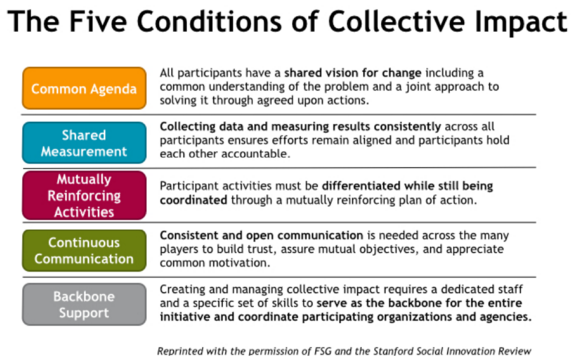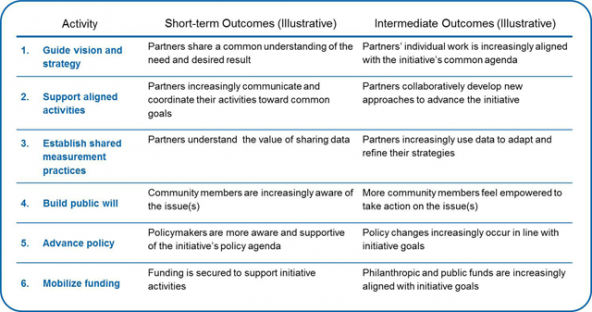How would you complete this statement? “If not for Eastside Pathways, x, y, z would not have happened in our community.”
When answering the question, did you think of Eastside Pathways the partnership or Eastside Pathways the backbone organization? An important distinction, but perhaps one that does not immediately comes to mind when one hears ‘Eastside Pathways’. Why is the distinction important? Because the backbone and the partnership have very different roles and expected outcomes.
The Eastside Pathways backbone supports the broader partnership. The backbone’s roles include convening and facilitating, data collection and reporting, communications, and community outreach.
The partnership is the organizations and individuals who have agreed to work collaboratively, systematically, and ultimately differently—while still retaining their own missions of work. Eastside Pathways has nearly 60 partners, comprised of private, public, and nonprofit organizations such as the City of Bellevue and the Bellevue School District.
If we knew 4 ½ years ago what we know today, would we have named the backbone organization the same name as our community partnership? My personal opinion … no.
I believe the naming issue, in some cases, may contribute to a lack of understanding of the expected outcomes for which the backbone is responsible. According to Stanford Social Innovation Review (SSIR), the common theory of change for a backbone organization is that “it ultimately seeks to improve social outcomes by organizing cross-sector groups of partners to transform an often inefficient, fragmented system”.
To better clarify the distinction, below is an outline of the 5 elements of collective impact.

So what exactly are the expected backbone process outcomes? The chart below ties the influence of the backbone work to long-term initiative and community level outcomes.

Source: Stanford Social Innovation Review
With increased understanding and learning, a backbone organization may refine or shift focus over time. According to SSIR, backbone organizations and stakeholders “feel there is a natural progression from guiding vision and strategy, supporting aligned actives, and establishing shared measurement practices to deeper involvement in policy and resource mobilization”. In general, Eastside Pathways backbone, as a small organization, has followed this path.
We’re interested in what you think about the distinct roles of the backbone organization and the partnership. Let us know how you would complete the statement at the beginning of this article.
Article written by Stephanie Cherrington, Eastside Pathway’s executive director
